Black Cat, a relatively late print by Alex Colville (1920–2013), is remarkable for integrating several themes important to the East Coast painter: the role of the artist, the dichotomy between human and animal worlds, and the precariousness of order in the face of time and chaos. Perhaps more than any other of Colville’s works, Black Cat addresses his use of geometry to create order and evoke the inherent fragility of that construction.
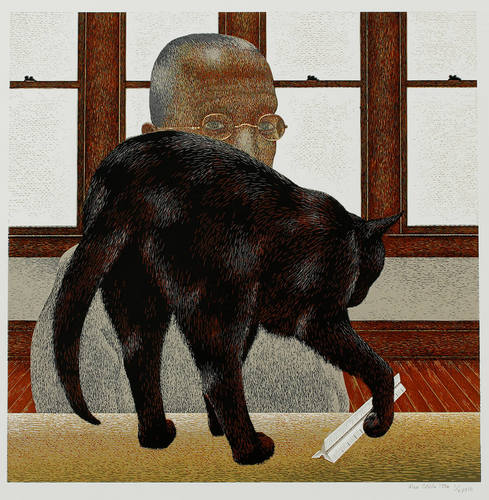
Alex Colville, Black Cat, 1996
Serigraph on paper, edition of 70, 36 x 36 cm, Owens Art Gallery, Mount Allison University, Sackville
In this work the artist looks directly at the viewer, the lower half of his face obscured by a cat toying with a triangular ruler in front of him on a table. Animals in Colville’s paintings and prints serve as a foil to humans. They do not strive for meaning or seek answers. As author Tom Smart observes, for Colville, “the cat is the emblem of unknowing.” The ruler may be the focal point of the composition, but for the black cat, its function is irrelevant; it is an object to play with.
The cat’s complete otherness undermines the underlying web of geometry that holds this, and every, Colville image together—order is simply irrelevant in the cat’s world. But for the artist, that geometry symbolized by the ruler is a device for creating order out of chaos, certainty out of mystery, and knowledge out of ignorance.
This Spotlight is excerpted from Alex Colville: Life & Work by Ray Cronin.
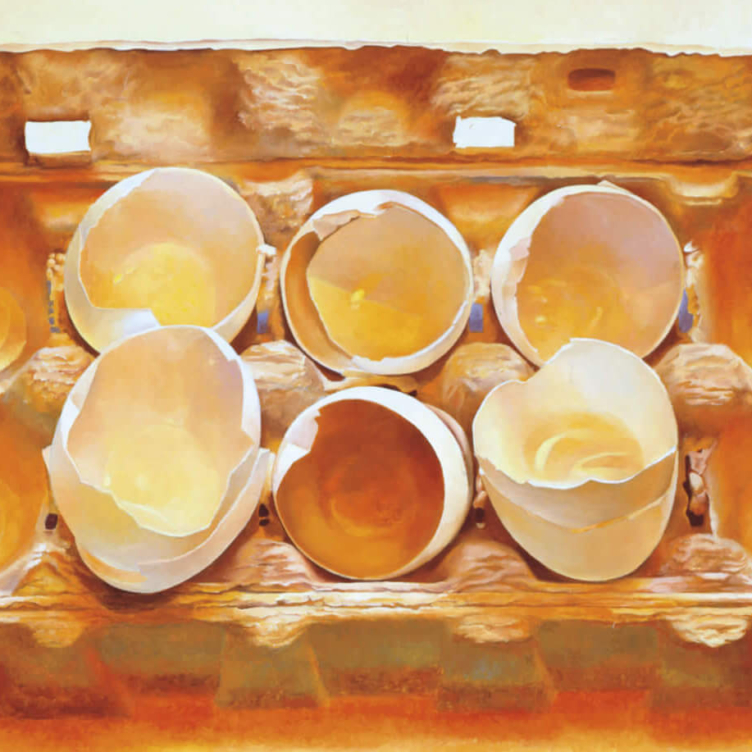 The Weight of Absence
The Weight of Absence
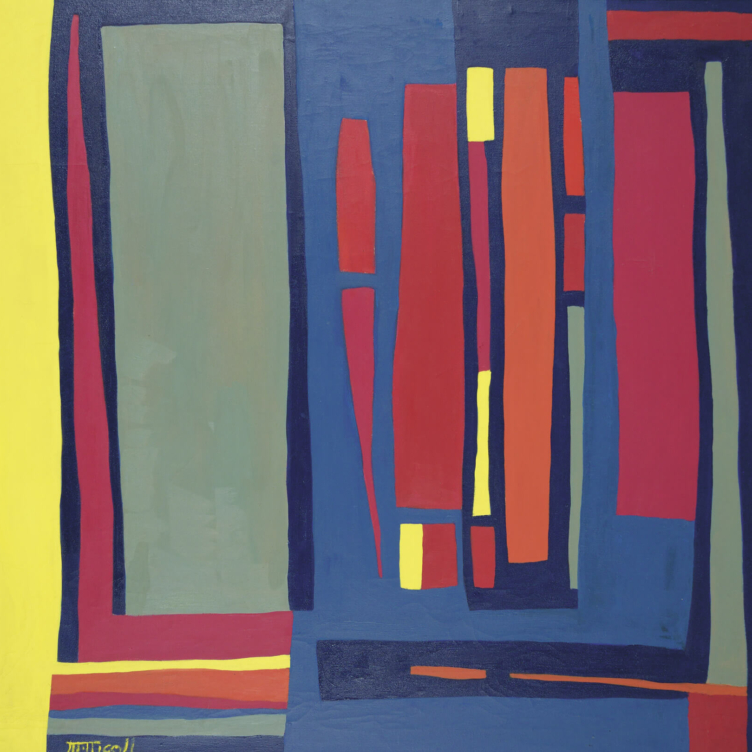 Abstract Alberta
Abstract Alberta
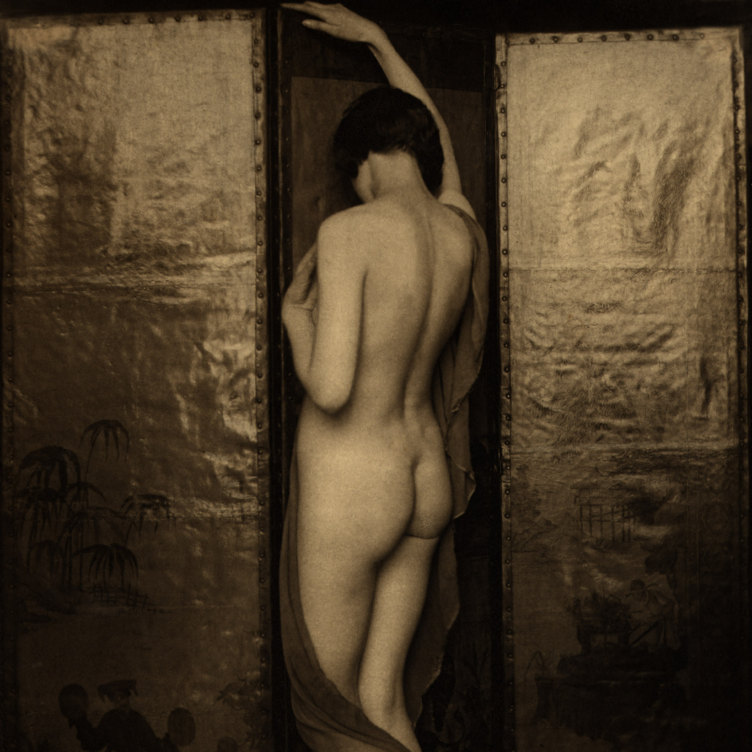 The Art of the Body
The Art of the Body
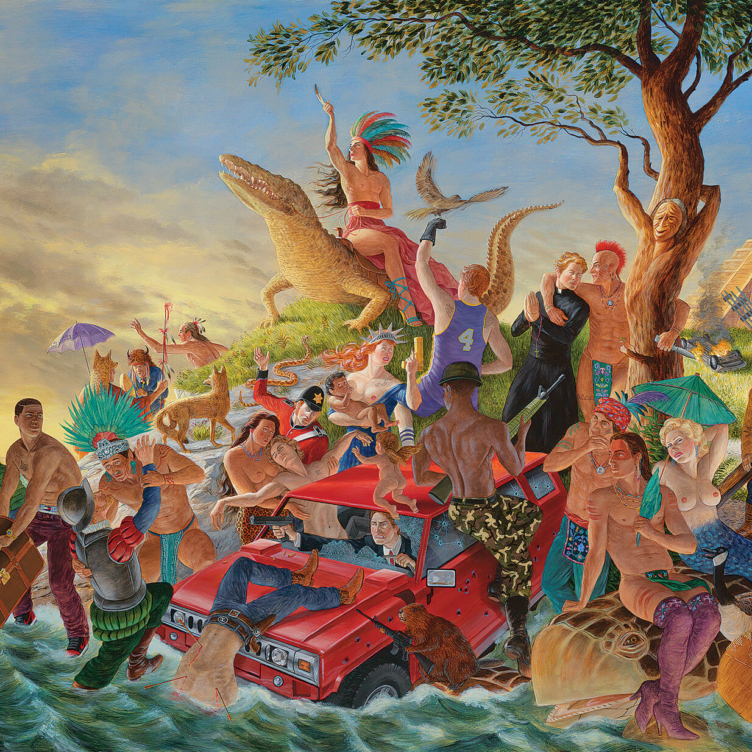 Rococo Riff
Rococo Riff
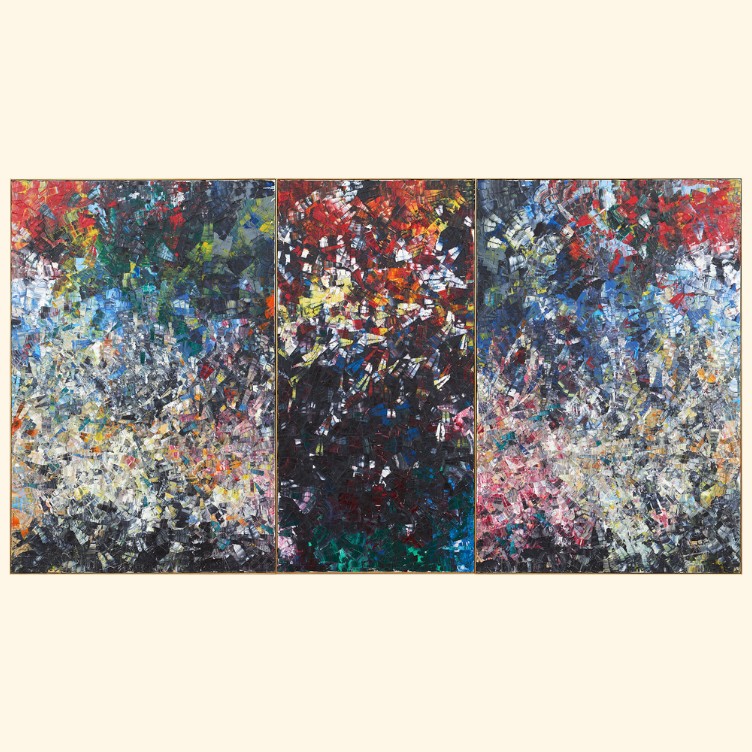 In Memory of Monet
In Memory of Monet
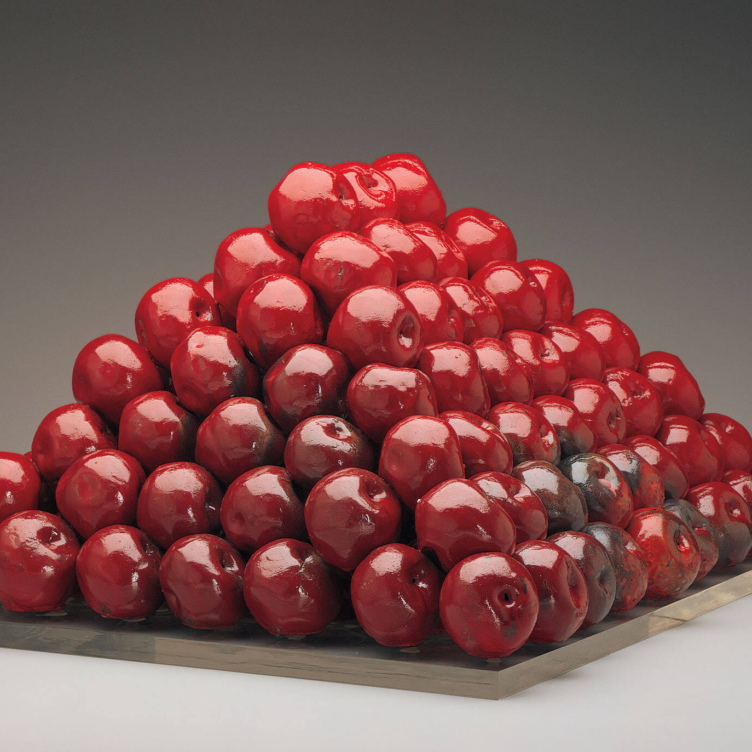 Pyramid Scheme
Pyramid Scheme
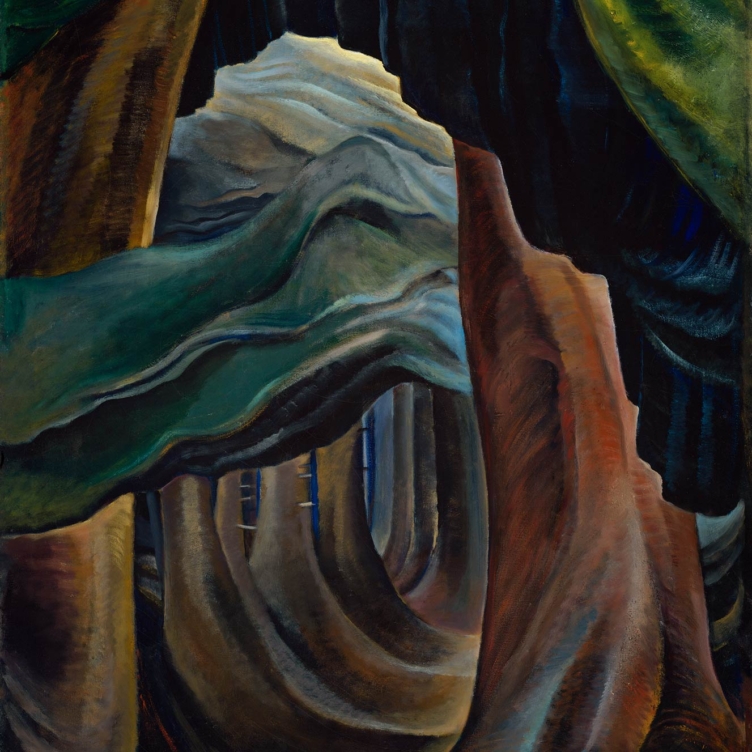 Transportive Trunks
Transportive Trunks
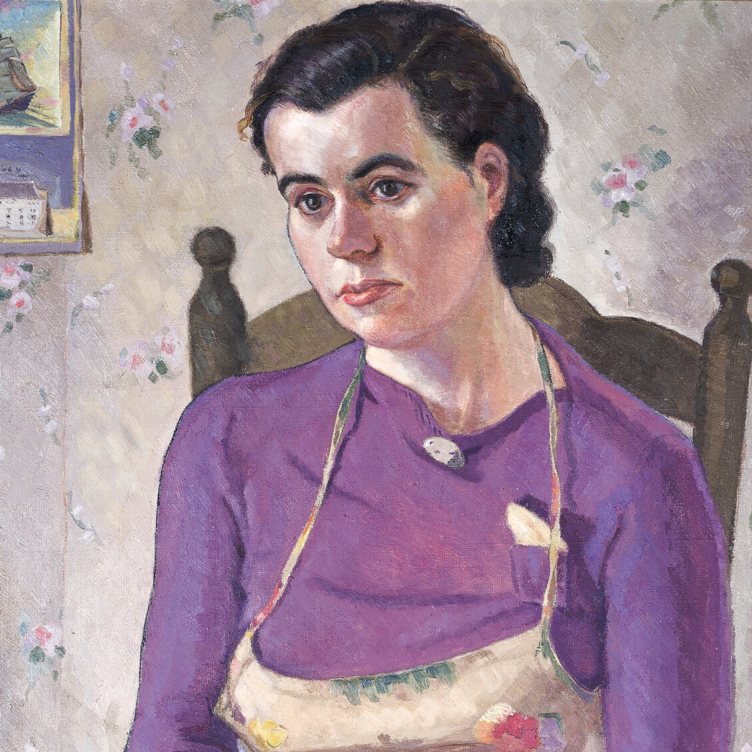 The Military Mate
The Military Mate
 Looking Up on the World
Looking Up on the World
 Vessel of Despair
Vessel of Despair
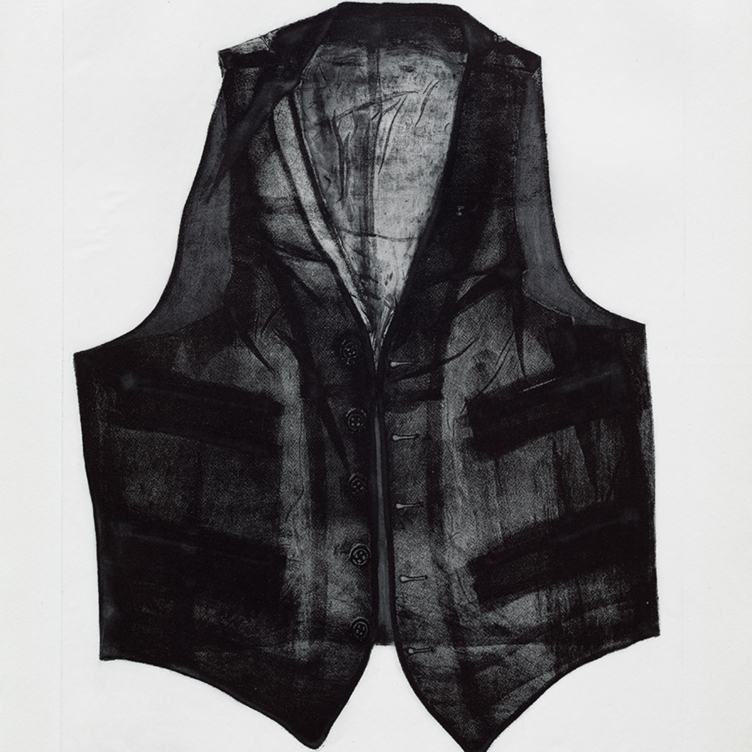 Layers of Meaning
Layers of Meaning
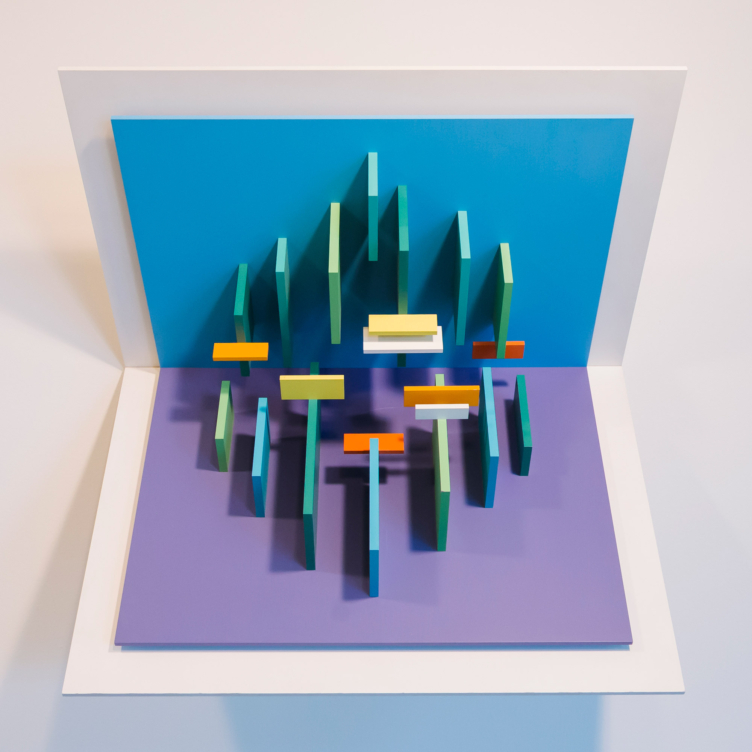 In Parallel to Nature
In Parallel to Nature
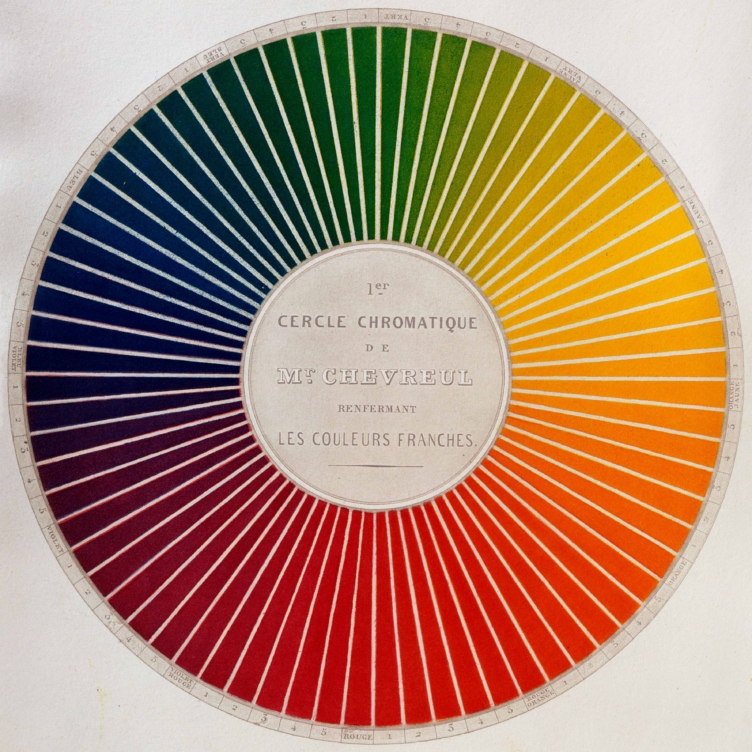 Wheel of Fortune
Wheel of Fortune
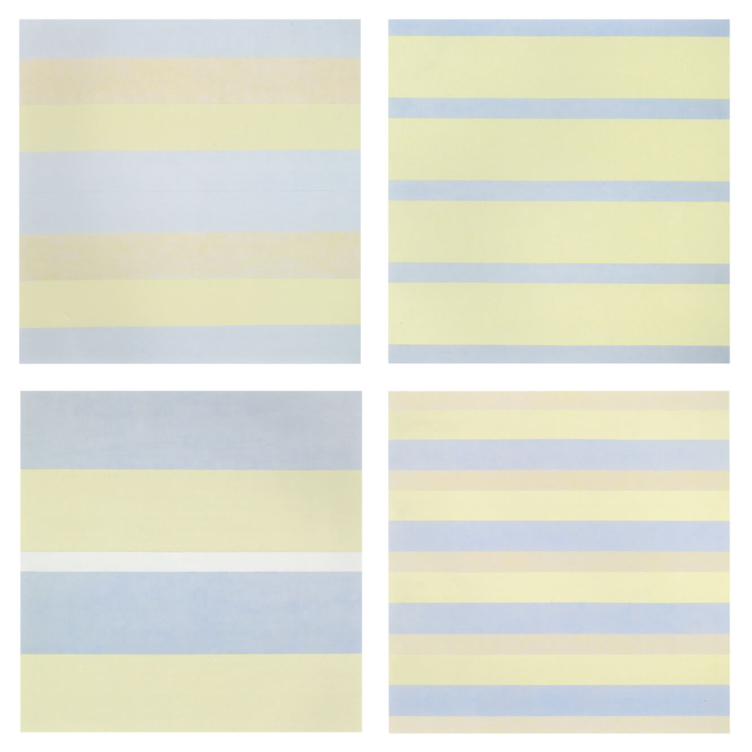 Paintings after emotional states
Paintings after emotional states
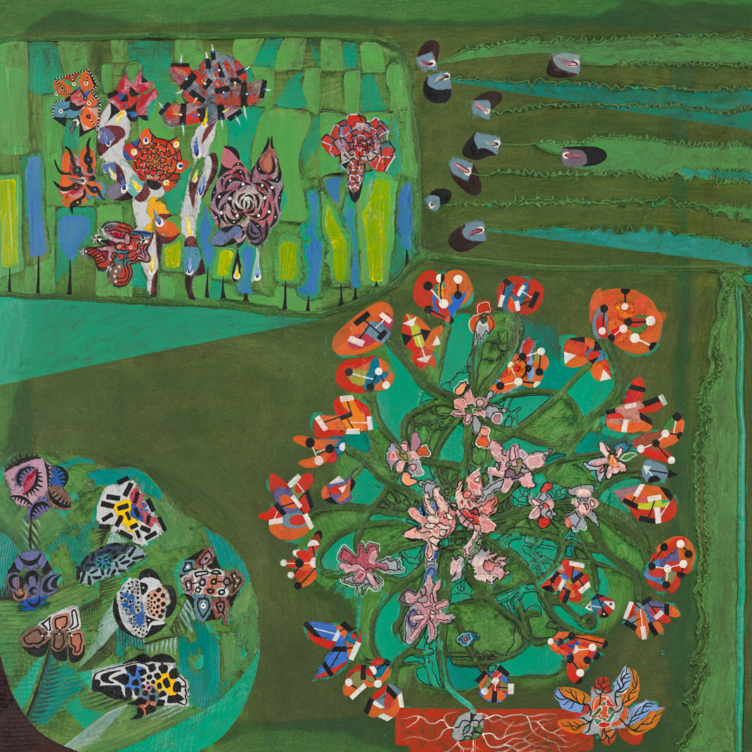 Garden of Delight
Garden of Delight
 Stitching the Archives
Stitching the Archives
 A Working-Class Hero
A Working-Class Hero
 Imagining Entangled Futures
Imagining Entangled Futures
 Bridging Far and Near
Bridging Far and Near
 Soft Power
Soft Power